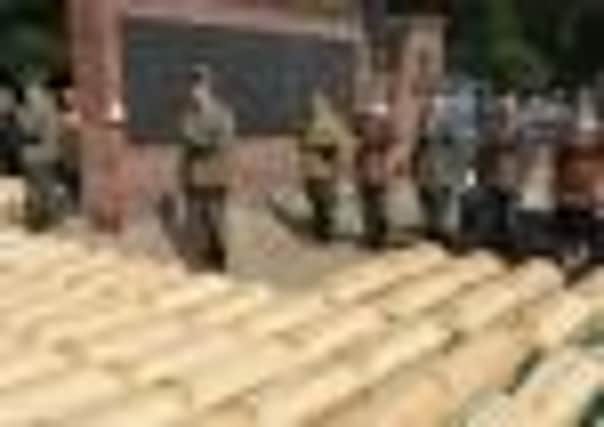Poland: Search for the hero who volunteered to be Auschwitz inmate so he could bear witness


Witold Pilecki survived nearly three years behind the wire where an estimated 1.2 million inmates, most of them Jews, were murdered.
His clandestine messages informed the Polish Home Army and a wider world of what the Nazis were doing in the complex near Krakow.
Advertisement
Hide AdAdvertisement
Hide AdBut he emerged from the camp into a post-war Poland ruled by puppets of Soviet dictator Josef Stalin who had no use for a nationalist who inspired his countrymen. He was accused of espionage, arrested and shot.


Now a mass grave containing 100 skeletons has been discovered on the edge of Warsaw’s Powazki Military Cemetery and it is hoped that one of them is Mr Pilecki.
The exhumations are part of a movement in post-communist Poland to officially recognise its war-time heroes who have remained unsung for so long.
“He was unique in the world,” said Zofia Pilecka-Optulowicz, paying tribute to her father’s 1940 decision to walk straight into a Nazi street round-up with the aim of getting inside the extermination camp.
“I would like to have a place where I can light a candle for him.”


Krzysztof Szwagrzyk, a historian in charge of the dig, said: “The perpetrators have not been punished and the bodies of the victims have not been found. Those times will be coming back to us until we find the bodies and bury them with due honours. We are doing them justice.”
Mr Pilecki’s son Andrzej, 80, and dozens of other relatives of victims have given samples of their DNA to be matched with the remains from the dig site. It will take several months to determine whether Mr Pilecki, who is understood to have been killed by a bullet to the back of the head, is among them.
Stalin ordered his arrest, and those of his comrades, because he feared their war-time resistance skills might be turned on the new Polish Communist vassal state.
Advertisement
Hide AdAdvertisement
Hide AdPoland’s Institute of National Remembrance (IPN), a Warsaw-based research institute that commemorates the suffering of the Polish people during the Nazi and Communist eras, is in charge of the forensic quest to give an identity to the jumble of bones pulled from the grave site.
A cavalry captain when Germany invaded Poland on 1 September 1939, Mr Pilecka joined the Polish underground where he volunteered to be deported to Auschwitz so that he could gather intelligence on the genocide reported to be under way there.
“I am expected to describe bare facts only,” he later wrote in his account of his time as prisoner No.4859. “But we were not made of wood.”
Poland’s government-in-exile would use the document, known as “Witold’s Report,” to help convince the Allies that the Holocaust was really happening.
In one report, he wrote that the inmates had to build one of the gas chambers and a large oven. “We were building a crematorium for ourselves,” Pilecki noted.
He survived beatings and two bouts of pneumonia. He also witnessed the Germans sending Soviet prisoners of war and Jews to the gas chambers.
“People were so packed together that they were unable to fall down in the moment of their death,” he wrote.
Pilecki used forged documents to get himself assigned to work in a bakery outside the electric fence after two and a half years as an inmate. On the night of Easter Sunday 1943, he and a group of other inmates forced open a door and fled.
Advertisement
Hide AdAdvertisement
Hide AdHe was eventually recaptured by the Germans and found himself in a camp near Murnau, in Bavaria, when the war ended. He returned home in the autumn of 1945 to learn that thousands of former resistance fighters had disappeared under the new Soviet-controlled leadership.
Pilecki began gathering information about the new regime and its crimes, including information on the trials of opposition members, executions and deportations.
The secret police arrested Mr Pilecki in May 1947 and he was quickly convicted in a show trial. On 25 May, 1948, he was taken from his cell and executed.
He is remembered across Poland. A street in Warsaw is named after him, as are some schools and children learn of his exploits in history lessons.